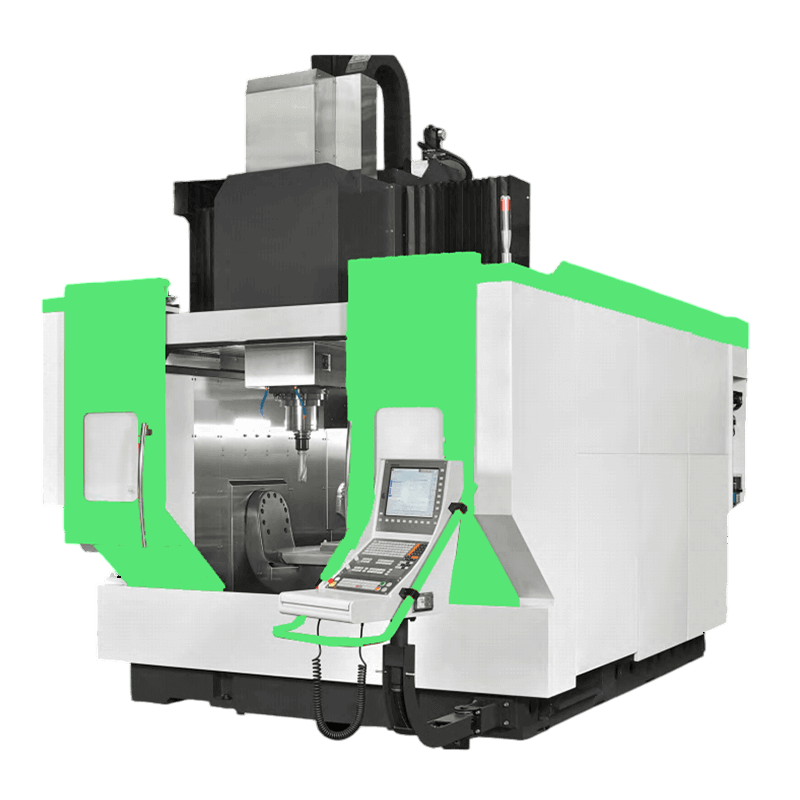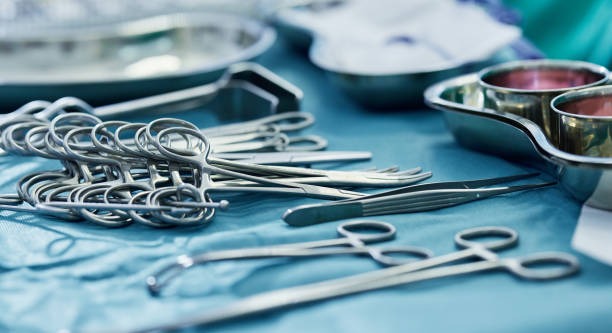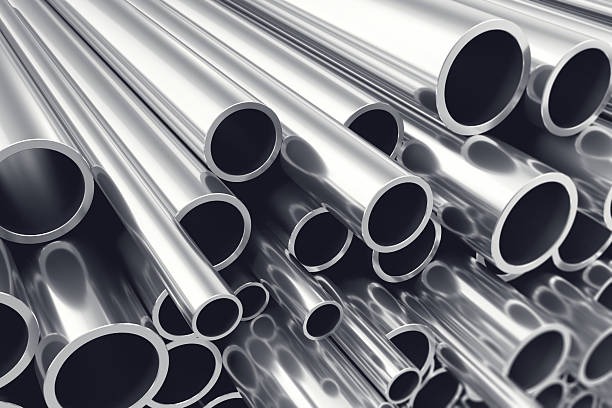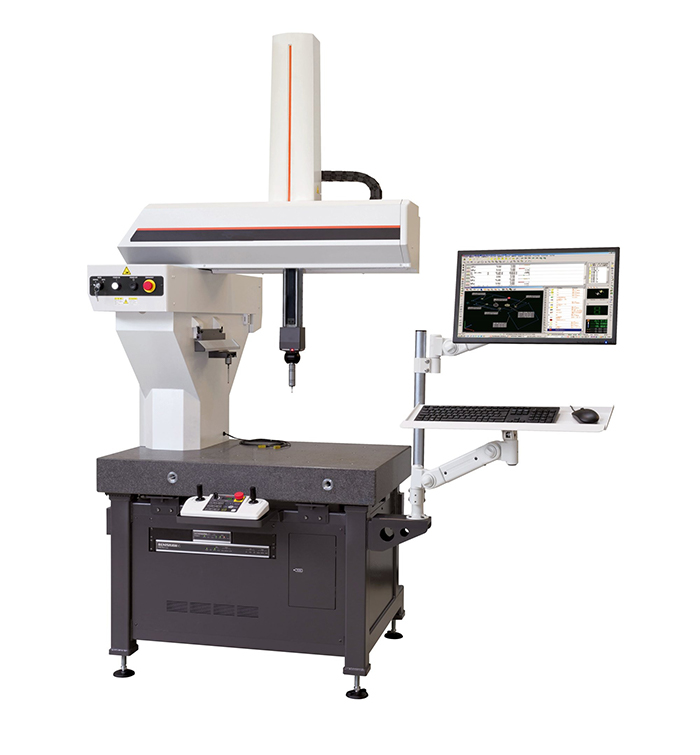医療機器CNC加工とは、コンピュータ数値制御(CNC)を用いて医療部品を成形するプロセスです。この機械はプログラムされたコマンドを用いて、切削工具を必要な場所に正確に移動させます。このプロセスでは、所望の形状になるまで材料を層ごとに削り取ります。例えば、チタン製の股関節インプラントを作成する場合、CNC加工機は非常に高い精度で加工できるため、患者の骨構造にほぼ完璧にフィットします。
医療用CNC加工と標準的なCNC加工の主な違いは、精度と清浄度にあります。自動車エンジンの一般的な部品であれば、多少の欠陥は許容されるかもしれませんが、外科用ネジでは許容されません。医療機器の製造においては、部品は滅菌済みでバリがなく、米粒よりも小さいことが求められます。そこで、マイクロフライス加工やスイス式旋盤加工といった特殊な技術が活躍します。これらの技術は、精度を損なうことなく、微細で複雑な部品を製造するのに役立ちます。
医療業界は精度に大きく依存しており、CNC加工はまさにそれを実現します。外科医が器具を手に取るたび、患者がインプラントを受けるたびに、CNC技術は重要な役割を果たしてきました。CNC技術がなければ、一貫性があり、安全で、正確なツールを製造することはほぼ不可能でしょう。
CNC加工は、医療現場の厳しい要件を満たすため、医療機器製造の基盤となっています。整形外科用インプラント、歯科用固定具、心血管ツールなどの機器を考えてみましょう。これらの機器は、医療基準だけでなく、患者一人ひとりの解剖学的構造にも適合する必要があります。CNC加工機は、コンピューター制御と再現性の高い精度によって、これを実現します。このプロセスにより、人為的ミスが削減され、患者の安全性が向上します。
病院や医療機器メーカーは、生体適合性と品質保証に大きく依存していることに気づきました。ISO 13485やFDA 21 CFR Part 820といった規格は、医療部品の製造と試験方法を規定しています。CNC加工は、あらゆる工程を記録、追跡、再現することで、企業がこれらの規格を満たすのに役立ちます。万が一、欠陥が発生した場合、エンジニアは正確なツールパスやバッチ番号まで遡って追跡することができます。
CNCフライス盤 医療機器製造の主力機械です。金属やプラスチックの塊を複雑な形状に切削・成形します。股関節、膝関節インプラント、手術器具などを製造する際、この機械の5軸制御により、部品の位置を変えることなくあらゆる側面に加工できます。かつて、5軸フライス盤がチタンから股関節インプラントを削り出す様子を目にしましたが、まるで魔法が動いているようでした。
これらの機械は、輪郭や曲線形状に対応できることで知られています。これは、人体にぴったりとフィットする必要があるインプラントに特に有効です。 切削工具 最終表面が滑らかで精密になるまで、ミクロン単位の材料を除去します。その結果、手作業による重労働を必要とせず、研磨やコーティングが可能な状態になります。
旋盤、特にスイス型旋盤は、骨ネジ、ロッド、カテーテルといった細長い部品を加工します。「スイス」という名称は、精度が全てであるスイスの時計産業に由来しています。医療機器の製造においても、体内に何年も安全に留置できるデバイスを製造するために、同様の精度が求められています。
これらの機械は、非常に小さな直径(時には1ミリメートル以下)の加工にも対応し、完璧な同心度を維持します。つまり、それぞれのねじ山やピンが、あるべき位置に正確に収まるということです。これらの機械の仕組みは実に魅力的です。切削工具ではなく材料が動くため、振動が低減され、極めて高い精度が実現します。まるで鋼鉄を使ったバレエを見ているかのようです。
研削盤と研磨盤は、他の機械が加工を始めたものを仕上げる機械です。フライス加工や旋削加工の後、多くの医療部品は組織への刺激を防ぐために鏡面仕上げが求められます。研削加工は微細な欠陥を除去し、研磨加工は微細で反射性の高い光沢を与えます。外科用メスやインプラントの場合、最終的な研磨は使用中の接触面の滑らかさと摩擦の低減につながります。
クリーンルームでは、これらの仕上げ機械が静かに、そして慎重に稼働しています。技術者が光反射計を使って最終表面を測定し、傷が残っていないことを確認しているのを見たことがあります。この完璧さは見た目だけでなく、安全性にも配慮されています。
EDMは、電気火花を用いて、チタンやステンレス鋼など、通常の切削工具では硬すぎる材料を成形します。小さな穴や空洞、手術器具の複雑な形状の加工に最適です。工具と材料の間に物理的な接触がないため、EDMは標準的な工具では不可能な形状を実現できます。
このプロセスは、腹腔鏡の先端、整形外科用ネジ、マイクロ器具などの工具で特によく使用されます。放電加工機が稼働する様子を見ていると、不思議なほど心が落ち着きます。何千もの小さな火花が飛び散り、その一つ一つが金属の粒を削り取っていくのです。ゆっくりと、1ミクロン単位の精度で精密に仕上げられた最終部品が姿を現します。
多軸加工センターは、フライス加工、旋削加工、穴あけ加工を1台の機械に統合しています。この構成により、複数の段取り作業が不要になり、時間を節約できます。整形外科用インプラント、歯科用アバットメント、カスタムメイドの外科用治具などに最適です。脊椎インプラントを製造する工場を訪問した際、1台の多軸加工機で1回の加工で部品一式を製造できることに気付きました。
多軸加工の主な利点は、効率性と精度です。部品をあらゆる角度から停止することなく加工することで、位置ずれを最小限に抑えます。つまり、最終部品の検査前の調整はほとんど、あるいは全く必要ありません。

初めて医療機器の加工工場に足を踏み入れた時、CNC工作機械から作られる医療部品の種類の多さに驚きました。病院や手術室で使われる金属やプラスチックの部品は、ほぼすべてこれらの精密加工システムを通過していると言えるでしょう。CNC工作機械が様々な医療分野をどのように支えているのか、以下にご紹介します。
CNC 加工は、股関節、脊椎ケージ、骨ネジ、膝インプラントの製造に使用されます。
• これらの部品は患者の骨格に極めて正確にフィットする必要があります。
• チタンとコバルトクロム合金は、強度と生体適合性の点で最も一般的な材料です。
• 滑らかな仕上げにより摩擦が軽減され、組織の炎症を防ぎます。
• 完成した股関節カップを手に持ったことがあるのですが、磨き上げられていて鏡のように光を反射していました。この表面は見た目のためだけでなく、インプラントが体内でスムーズに動くのにも役立っているのです。
• 鉗子、メス、クランプ、ドリルガイドなどの器具は、一貫した鋭さと形状を実現するために CNC の精度に依存しています。
• CNC 加工により、すべての部品のバランスが保たれ、手術中に確実に機能します。
• ステンレスやチタンは繰り返し滅菌しても損傷しないため、よく使用されます。
• レーザー検査により、すべてのエッジが鋭く滑らかであることが確認されます。
• これらの部品が拡大鏡の下でチェックされるのを見て、外科医は常に完璧さを求めているのだと実感しました。

• CNC マシンは、患者の口にぴったり合うクラウン、アバットメント、歯科インプラントを作成します。
• 歯科医は 3D スキャンをメーカーに直接送信し、その日のうちにミリングを行うことができます。
• 材質にはセラミック、ステンレス、チタンなどがあります。
• これらの機械は非常に精密に切断するため、歯科部品は使用前に軽く磨くだけで済む場合がほとんどです。
• 私はかつて、機械がセラミックブロックからクラウンを削り出すのを見たことがあります。それは 10 分もかからず、完璧にフィットしました。
• CNC マイクロマシニングでは、ペースメーカーハウジング、マイクロバルブ、外科用マイクロツール、ステントなどを製造します。
• これらの部品は多くの場合、指の爪よりも小さいですが、人体の中で何年も確実に機能する必要があります。
• チタンやステンレス鋼などの素材は腐食に耐え、体液内での安定性を維持します。
• エンジニアはよく「欠陥が目に見えるなら、それはすでに大きすぎる」と言います。まさにここで必要な精度がこれです。
• すべてのスパーク、カット、研磨は、エラーを回避するためにマイクロメートルの精度で制御されます。
• CNC 加工は、MRI 装置、CT スキャナー、ロボット手術システムもサポートします。
• コンポーネントには、ブラケット、フレーム、機器アーム、センサー ハウジングが含まれます。
• 正確なテスト結果を得るには、これらの部品が安定し、振動のない状態を保つ必要があります。
• 軽量で強度のあるアルミニウムや高性能プラスチックが好まれます。
• スキャナー内部の最小のマウントやブラケットでも正確なサイズ基準を満たす必要があることに気付きました。それが、機械が長年にわたって信頼性の高い読み取り結果を生成し続ける方法です。
• CNC マシンは、患者の可動性を向上させるカスタム人工関節、ソケット、コネクタを作成します。
• パーソナライズされたデザインにより、毎日の着用時のフィット感と快適さが向上します。
• 高度な 5 軸フライス加工により、体の輪郭にぴったりと合う自然な曲面を実現できます。
• 金属とポリマーの加工を組み合わせることで、重量を増やすことなく強度が得られます。
• テクノロジーによって原材料が人生を変えるような支援機器に変化していく様子を見るのは心温まるものです。
• CNC 加工では、ロボット支援手術用のアーム、関節、エンドエフェクタを製造します。
• これらの部品は、機械的な遊びがなく、正確かつスムーズに動く必要があります。
• 安定性と応答性を高めるために、ステンレススチールと軽量アルミニウムが使用されています。
• 各ジョイントは最終組み立て前に複数の許容度テストを受けます。
• かつて、ロボットアームの部品が 0.0005 mm の誤差で検査に不合格になったのを見たことがあります。エンジニアはただ笑って、「だから検査するんです」と言いました。
チタンは医療材料のスーパースターです。強度が高く、軽量で、錆びにくく、アレルギー反応も起こしません。インプラント、骨接合ネジ、さらには人工関節にも使用されています。欠点は、切削が難しいことです。チタンの加工には、過熱を防ぐため、鋭利な工具と低速加工が必要です。しかし、正しく行えば、体内で数十年も持続する部品が完成します。
ステンレス鋼は、耐久性、価格、滅菌の容易さから、再利用可能な外科用器具として依然として人気があります。316Lや17-4PHなどのステンレス鋼は耐腐食性に優れ、熱や洗浄剤への繰り返しの曝露にも耐えます。CNC工作機械は、これらのステンレス鋼を刃、クランプ、その他の耐久性の高い部品へと加工します。

アルミニウム合金は、主に診断機器や医療機器の筐体など、インプラント以外の部品に使用されています。軽量で熱伝導性に優れているため、冷却が必要な機械に最適です。また、機械加工が容易なため、コストを抑えることができます。
PEEK、PTFE、ウルテム、デルリンなどのプラスチックは、手術用トレイ、固定具、器具のハンドルなど、インプラント以外の部品に広く使用されています。特にPEEKは強度が高く、耐薬品性があるため、一時的なインプラントに最適です。
一部の部品には、曲げても元の形状に戻る形状記憶合金であるニチノールや、耐摩耗性と耐熱性に優れた医療グレードのセラミックなどの特殊な材料が必要です。これらの材料は、歯科や整形外科の用途でよく使用されます。
新しい医療機器を開発する際、設計者は迅速なプロトタイプを必要とします。CNC加工は、わずか数時間でテスト可能なプロトタイプを作成できます。これにより、チームは本格的な生産に移る前に、機能、適合性、そして設計を確認することができます。
試作品がすべての試験に合格すると、本格的な生産が開始されます。高速CNC工作機械は複数の部品を一度に加工し、数千個単位のユニットにわたって均一な精度を維持します。自動化により、手作業を削減しながら一貫性を確保します。
医療部品は機械加工後、バリ取り、研磨、電解研磨、不動態化処理、陽極酸化処理などの仕上げ工程を経ます。これらの工程により、鋭利なエッジが除去され、表面が滑らかになり、滅菌処理の準備が整います。インプラントの場合、表面仕上げは組織と材料の結合性を向上させることさえあります。
医療機器工と過ごす中で学んだことが一つあるとすれば、彼らの語彙には「十分に近い」という言葉が存在しないということです。精度は期待されるだけでなく、要求されるものなのです。医療分野では、わずかな誤差が大きな問題を引き起こす可能性があるため、品質管理はほぼ神聖なプロセスと言えるでしょう。
医療機器のCNC加工では、±0.001mmという極めて狭い公差が求められます。これは、塵よりも小さな値です。すべての部品は、座標測定機(CMM)、光学スキャナー、レーザーマイクロメーターなどのツールを用いて詳細な測定を受けます。これらの機器は、すべての曲線、エッジ、角度を検査し、各部品が設計仕様を満たしていることを確認します。

• 極めて高い精度と再現性
• 生体適合性材料との適合性
• 患者に合わせたカスタム設計の柔軟性
• 迅速なプロトタイピングと市場投入までの時間の短縮
• 清潔で安全な製造環境
• 人的ミスと無駄の削減
• プロトタイプから生産までのスケーラビリティ
• 医療機器製造においては ISO 13485 認証を取得した企業を選択してください。
• 品質と文書化に関しては FDA 21 CFR Part 820 に準拠していることを確認します。
• 定期的な監査と検査記録の証明を求めます。
• チタン、ステンレス鋼、医療グレードのポリマーを扱えることを確認します。
• 汚染を避けるために専用のツールと冷却剤を使用するショップを探してください。
• インプラントや外科用部品に関わる過去のプロジェクトについて質問します。
• パートナーは、多軸マシン、スイス旋盤、および微細加工設備を備えている必要があります。
• クリーンルーム加工設備は専門性を示す強力な証です。
• 自動化された検査および測定ツールにより、信頼性がさらに高まります。
• すべてのコンポーネントは最初から最後まで追跡可能である必要があります。
• 内部監査と検査ログにより継続的な一貫性が確保されます。
• 部品の検証に CMM またはレーザー スキャンを使用しているかどうかを尋ねます。
• 病院や医療サプライヤーのケーススタディや顧客の証言を確認します。
• 可能であれば施設を訪問してください。清潔さと整理整頓が多くのことを物語ります。
• 医療グレードの機械加工における真の経験は、過去の仕事から明らかであるべきです。
医療機器のCNC加工のあらゆる工程にどれほどの細心の注意と細部へのこだわりが注がれているかを見て、私はこれを芸術であると同時に科学でもあると尊敬するようになりました。これらの機械は一見普通の機械のように見えますが、人の命を担う責任を担っています。精度とは単なる数字ではなく、信頼なのです。
したがって、次に病院に行って金属製のインプラントや光沢のある手術器具を目にしたときは、それがただ現れたのではなく、CNC 加工によって慎重に作成、検査され、完成されたものであることを思い出してください。